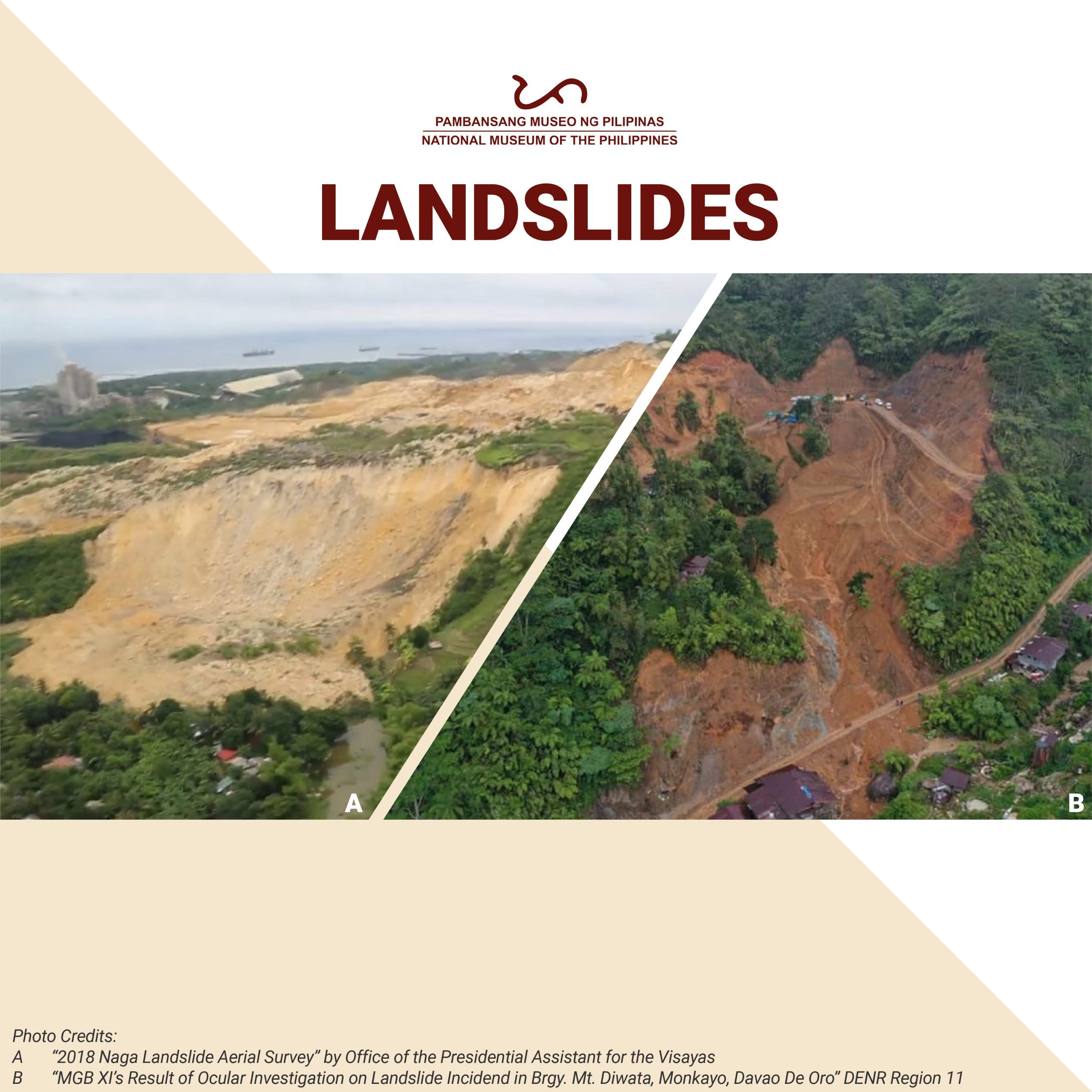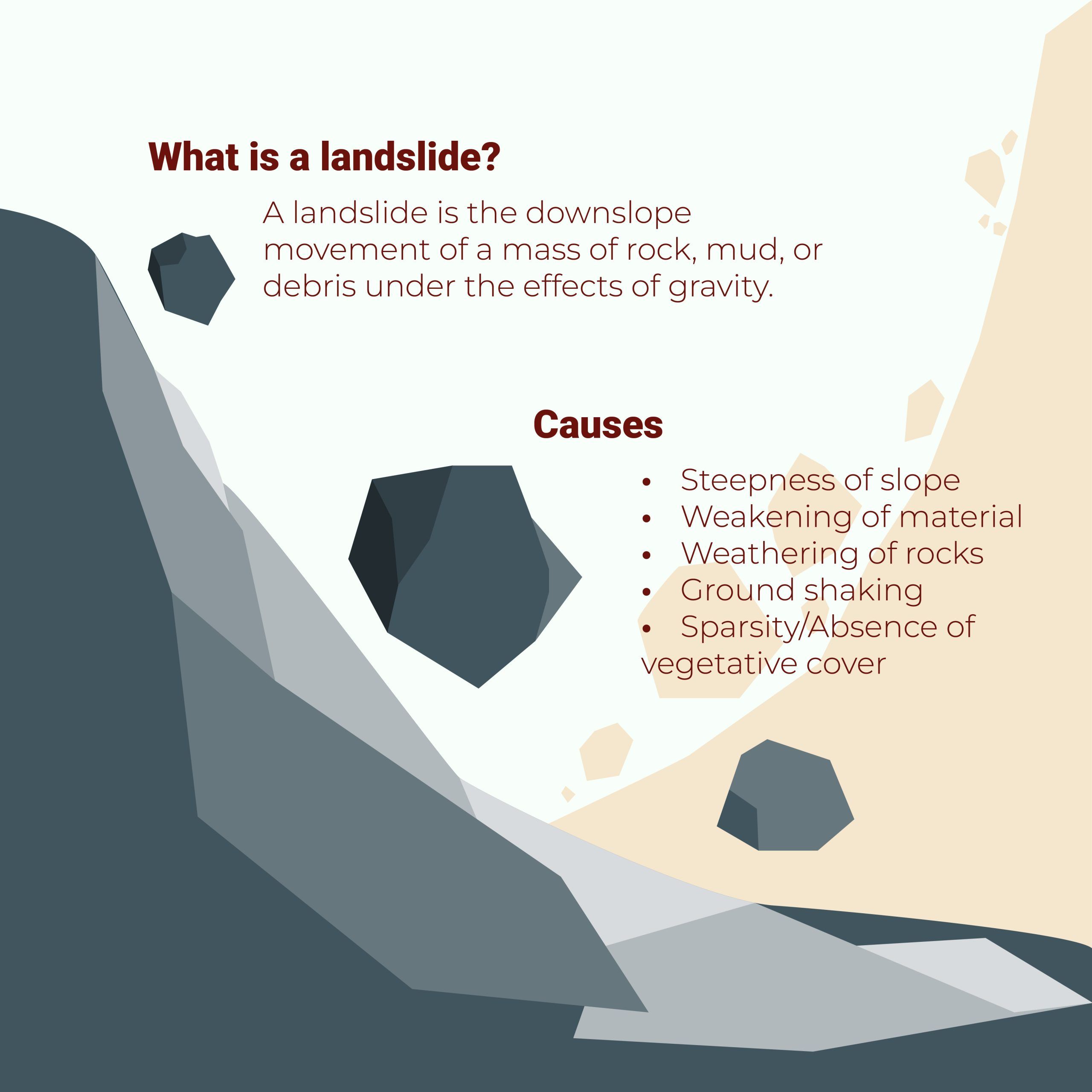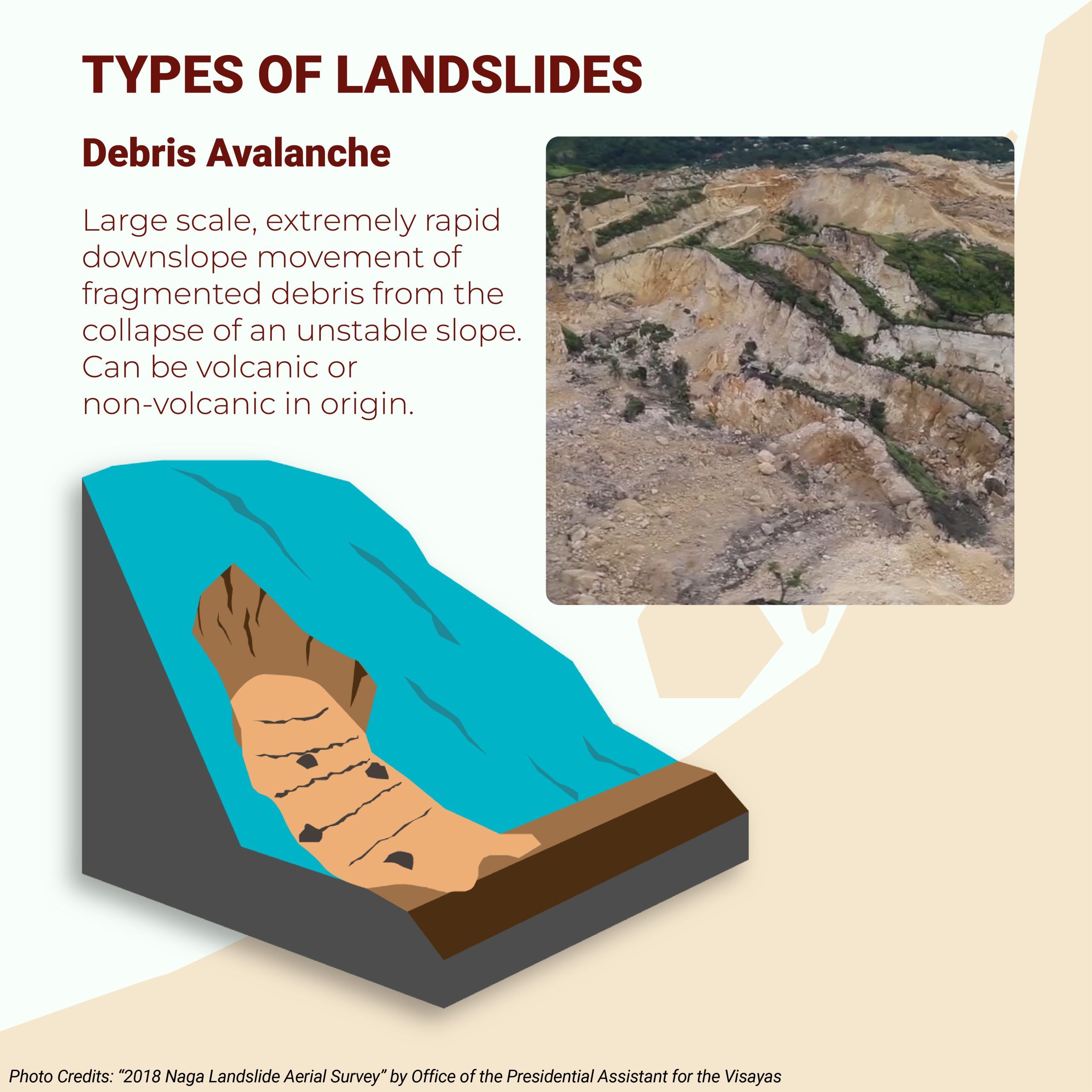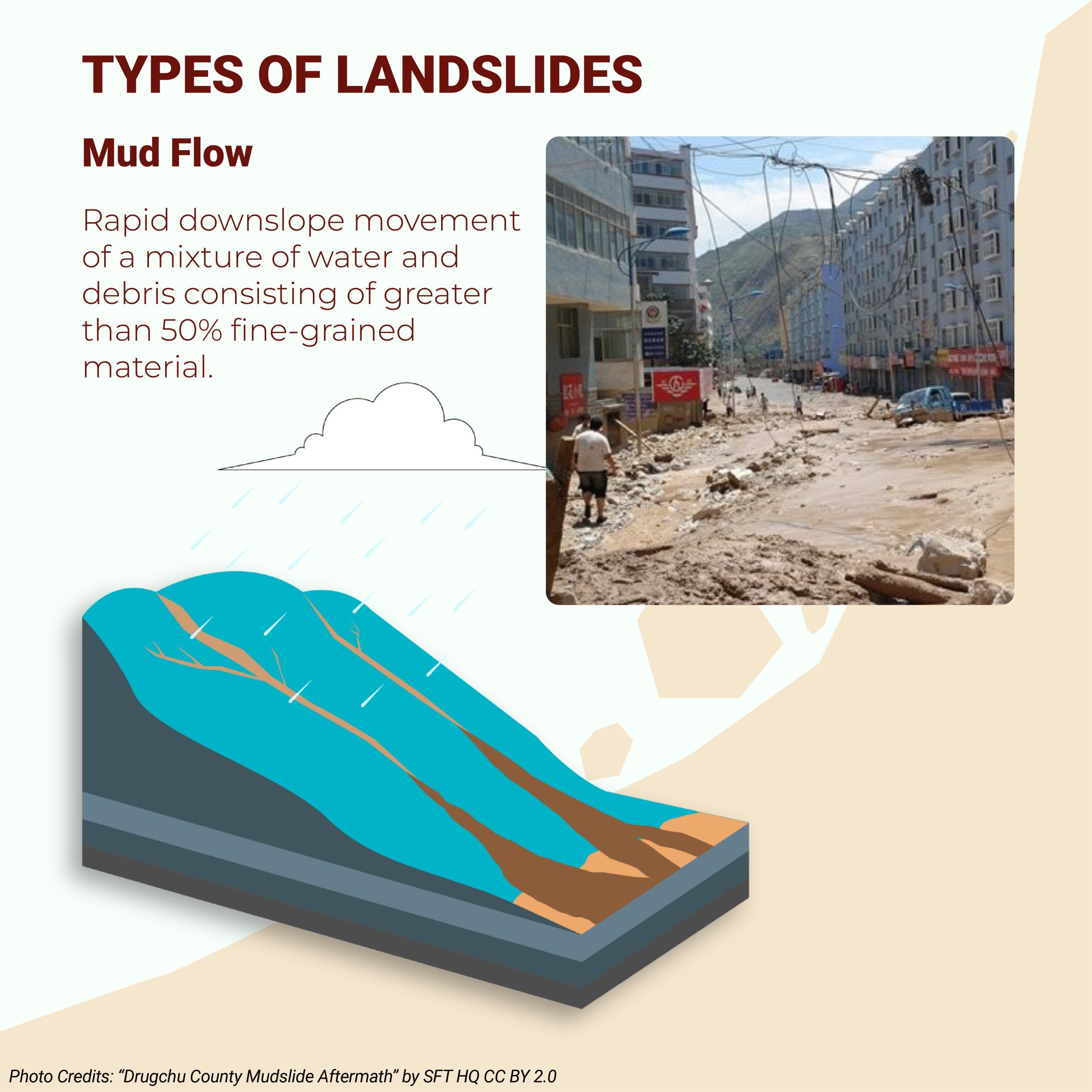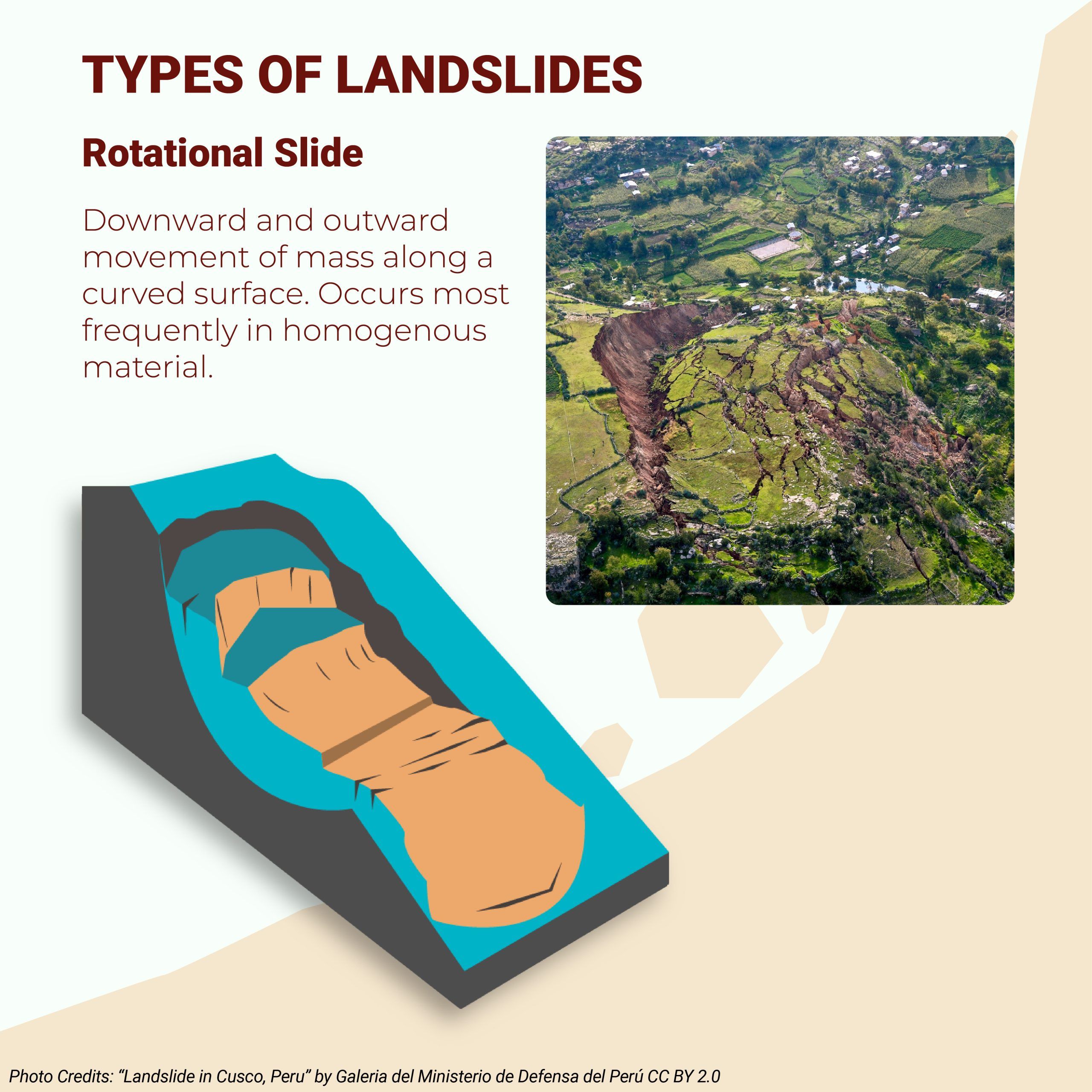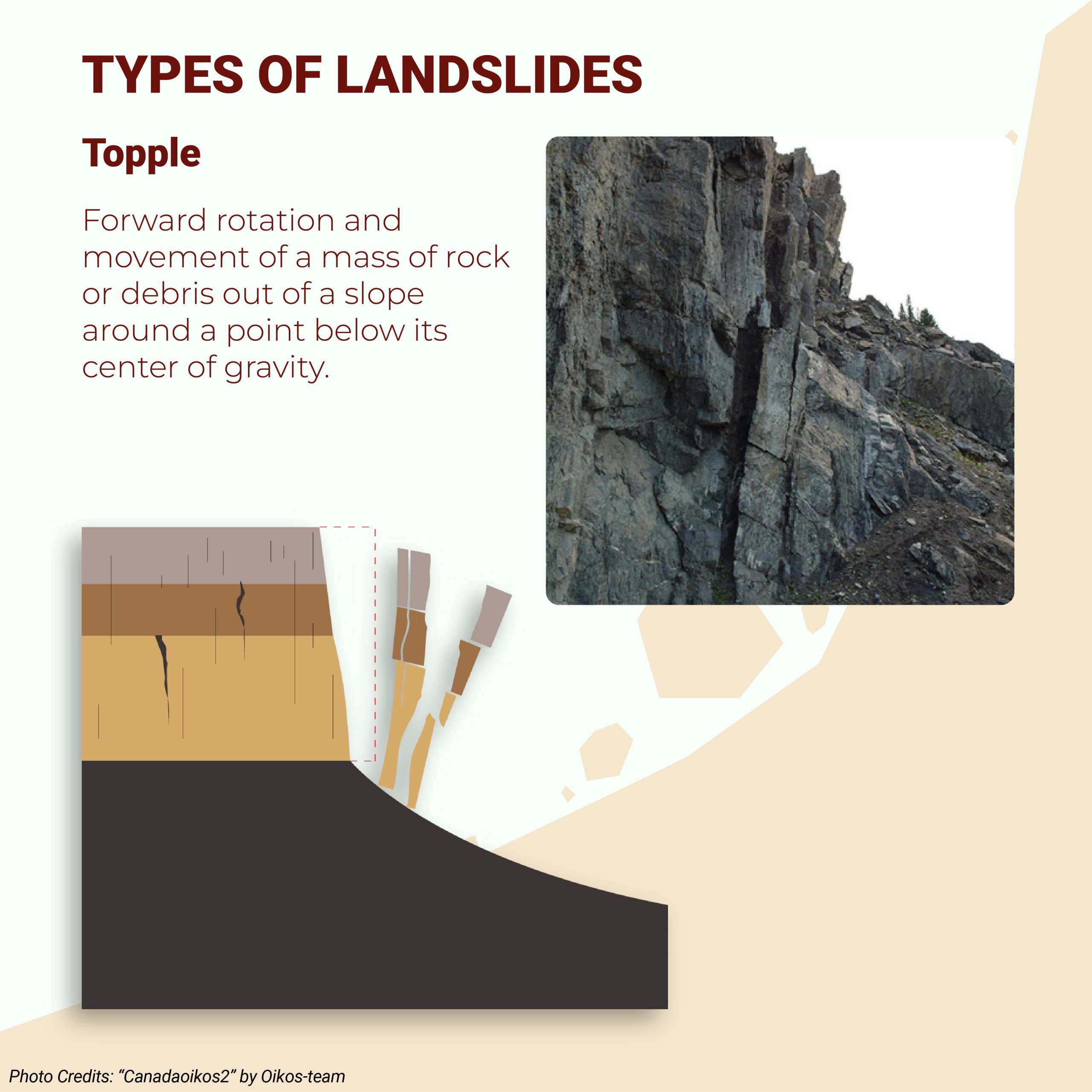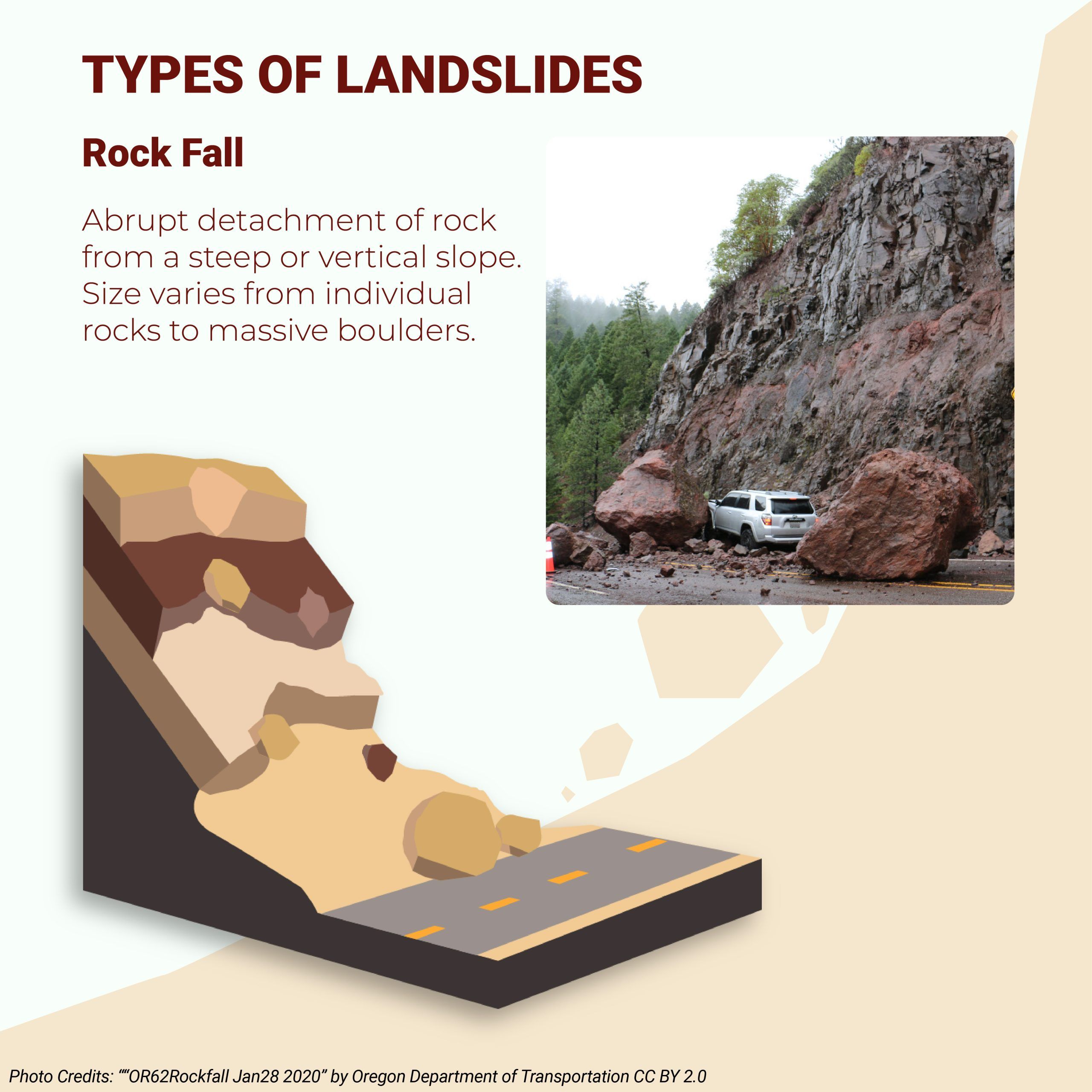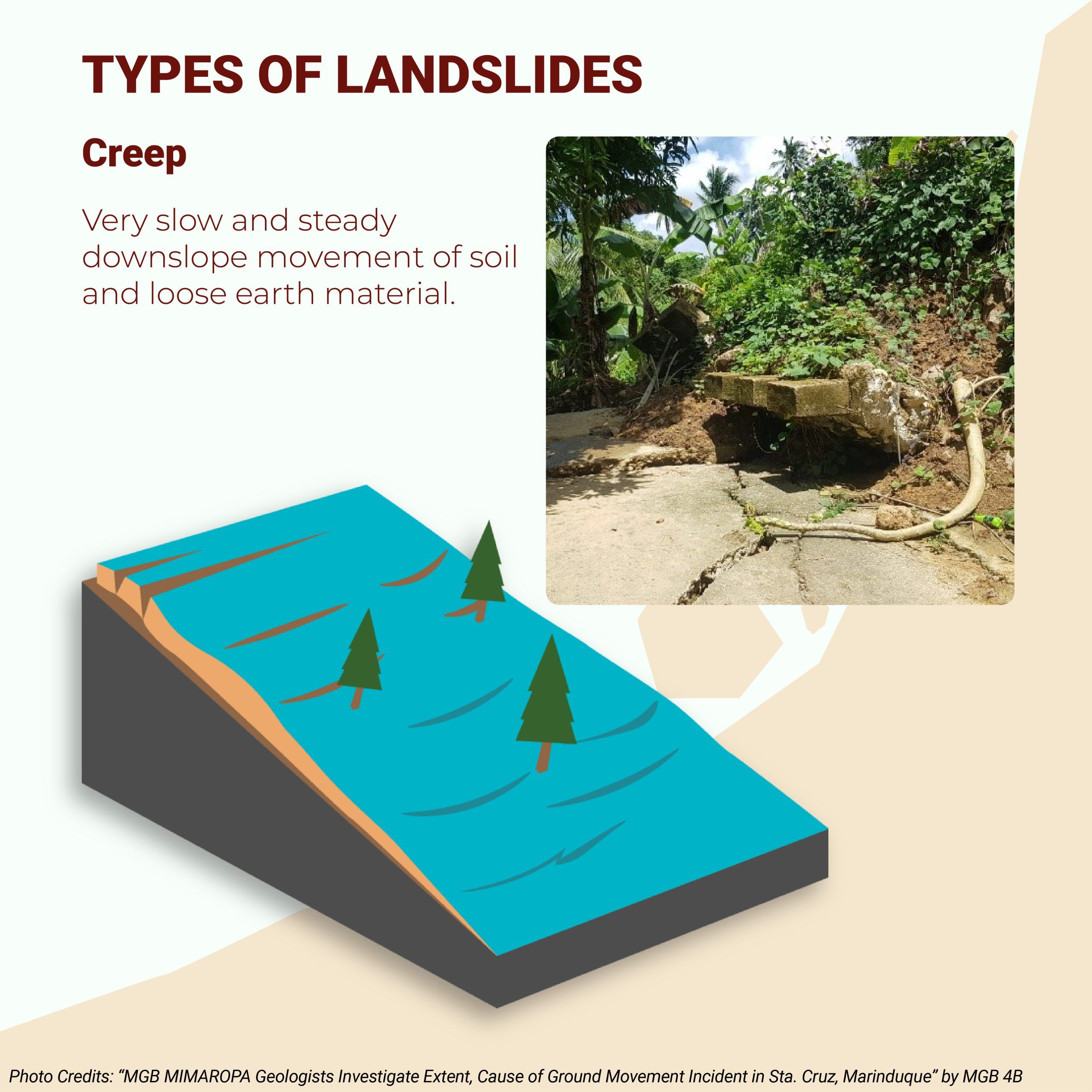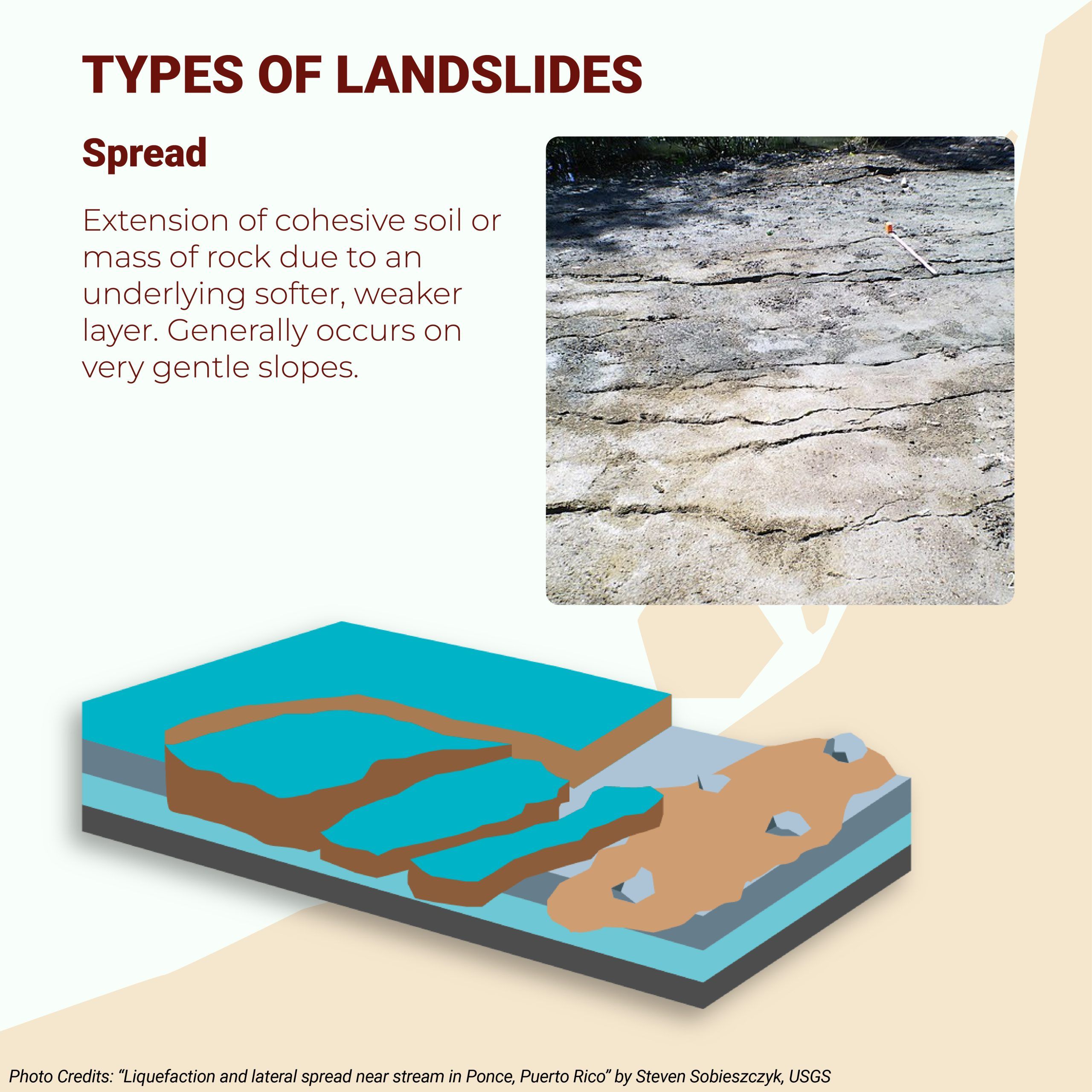BE ALERT FOR LANDSLIDES!
Today we are featuring one of the most intense geologic hazards in the country – the landslide.
A landslide is a mass wasting that occurs when a mass of rock, mud, or debris slides down a slope due to gravity. It is triggered either by intense rainfall, weathering of rocks, earthquakes, and volcanic activity. They can also be shallow or deep-seated. Shallow landslides are anchored in the soil layer and are usually composed of quick-moving debris flowing along valleys. Deep-seated landslides, on the other hand, are rooted in bedrock. They are frequently slow-moving and can cover large areas, destroying infrastructure and housing buildings. The term “landslide” refers to five types of slope movement: falls, topples, slides, spreads, and flows, which are further classified based on the geologic material.
In February 2006, a landslide incident occurred in the village of Guinsaugon in Saint Bernard, Southern Leyte. At least 1,000 people were buried alive under hundreds of tons of rocks, mud, and debris. Although triggered by a minor earthquake of magnitude 2.6, the heavy rainfall intensified its impact. Infrastructure and agricultural damage also amounted to millions of pesos.
The Philippines is vulnerable to natural disasters due to its geographical location, and growing the nation’s capacity to withstand them is a necessity that requires consistent effort. Let’s call for improved resiliency measures to enable more accurate risk assessment and better planning to lessen the impact of disasters!
July is National Disaster Consciousness Month. Your #NationalMuseumPH is one with the nation in this celebration towards a more prepared and disaster-resilient country.
Text by Geology and Paleontology Division
© 2022 National Museum of the Philippines
inquiry@nationalmuseum.gov.ph
(+632) 8298-1100
